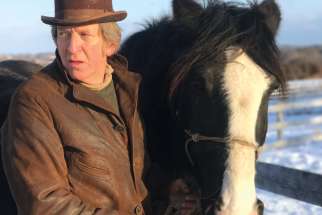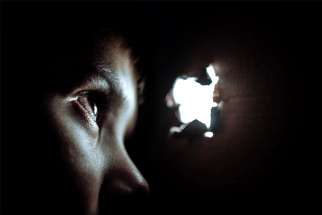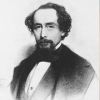Actor sees similarities between Dickens’ age and today
Celebrated Canadian actor Robert Holmes (R.H.) Thomson is about to step back into his element after a pandemic-induced hiatus.
Gerry Turcotte: The best and worst of times
An early December editorial cartoon struck a sympathetic chord with me. It depicted a weary Father Time, sitting at a bar and pleading to be relieved of duty early. Enough is enough, his hoary visage seemed to say.
Students bring out the best in Scrooge tale
Chesterton gives us best understanding of Dickens
As the English-speaking world celebrates the bicentennial of Charles Dickens’ birth — according him a crown second only to William Shakespeare’s for sheer fecundity in the service of literary genius — we should also acknowledge how our understanding of Dickens was framed by the great Catholic writer and apologist G.K. Chesterton.
His acclaimed biography of Dickens was published in 1906 when Chesterton was 32. Today a literary biography usually includes a fair amount of material recounting its subject’s life. That was not the tradition a century ago, when biographical detail was lightly sketched and most attention paid to a writer’s books. It might be more accurate to call Chesterton’s biography a critical study, though even that term would mislead, suggesting as it does a level of objective detachment which the ever-exuberant Chesterton never displayed. It might be truest to call it a celebration.
The value of all of Chesterton’s biographies, particularly his Dickens, wasn’t so much their biographical veracity — the strokes were much too broad and even reckless for that — as Chesterton’s uncanny ability to isolate and magnify important truths about his subjects’ writing and thinking that no one had identified before.
Early on in the book — and writing at a time when not so much was known about Dickens’ appalling treatment of his wife or the tetchiness of his relations with his publishers and professional colleagues — Chesterton makes a situation from Dickens’ infancy serve as a kind of template for his life. Commenting on how Dickens’ father would get the boy to sing for his elders, Chesterton writes:
“Some of the earliest glimpses we have of Charles Dickens show him to us perched on some chair or table singing comic songs in an atmosphere of perpetual applause. So, almost as soon as he can toddle, he steps into the glare of the footlights. He never stepped out of it until he died . . . Dickens had all his life the faults of the little boy who is kept up too late at night
. . . . In all the practical relations of his life he was what the child is in the last hours of an evening party, genuinely delighted, genuinely delightful, genuinely affectionate and happy, and yet in some strange way fundamentally exasperated and dangerously close to tears.”
Chesterton’s book appeared 36 years after Dicken’s death in 1870 at the age of 58, so the gap between their lifetimes was not unfathomably large. It would be like someone writing today about J.R.R. Tolkien or P.G. Wodehouse. Though Chesterton was born four years after Dickens’ death, in most ways they occupied the same world. Chesterton wrote at a time before Dickens was regarded as a classic writer.
The cultural overlords of the time tended to sneer at Dickens as today’s academic and critical writers reflexively dismiss a novelist who cranks out bestsellers a little too quickly. In the years between Dickens’ death and Chesterton’s book, the literary fashions of realism and expressionism led to criticism that Dickens’ world view was un-lifelike, that the perils his characters faced were exaggerated and their outcomes overly optimistic.
Chesterton argued that, of course, Dickens exaggerated, but like any self-respecting artist he only did so “when he found a truth to exaggerate. It is a deadly error (an error at the back of much of the false placidity of our politics) to suppose that lies are told with excess and luxuriance, and truths told with modesty and restraint. Some of the most frantic lies on the face of life are told with modesty and restraint; for the simple reason that only modesty and restraint will save them. . . . Truth alone can be exaggerated; nothing else can stand the strain.”
Chesterton believed Dickens achieved a rare and mystical balance in his books that awakened a drive for social reform. He makes the salient point that “this happy dreamer, this vulgar optimist
. . . alone of modern writers did really destroy some of the wrongs he hated and bring about some of the reforms he desired. Dickens did help to pull down the debtors’ prisons. . . Dickens did leave his mark on parochialism, on nursing, on funerals, on public executions, on workhouses, on the Court of Chancery. . . If Dickens was an optimist he was an uncommonly active and useful kind of optimist.”
Chesterton’s biography of Dickens was an enormous commercial and critical success which, one typical review said, “marks the definite entry of its author into the serious walks of literature.” The book not only established Chesterton, it re-established Dickens as marked by the publication the very next year of the Everyman editions of Dickens’ entire oeuvre, with specially commissioned introductions by Chesterton to all two dozen volumes.
(Goodden is a freelance writer in London, Ont.)





